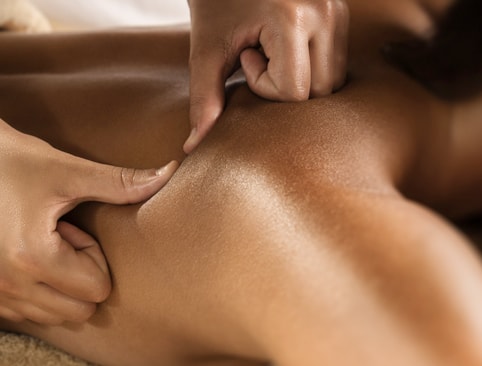Registered Massage Therapy
Defined as the manipulation of the body’s soft tissues, massage therapy is a clinically oriented health care option that helps alleviate the discomfort associated with everyday and occupational stresses, muscular overuse and many chronic pain conditions. The objective is achieving optimal health by normalizing these tissues using manual techniques that include applying fixed or movable pressure.
The practice involves working and acting on the body with pressure — structured, unstructured, stationary or moving — tension, motion or vibration. Touch is the primary medium of massage therapy. Massages can also be applied with the hands, fingers, elbows, knees, forearm, feet or a massage device. The basic philosophy behind massage therapy is strengthening the body’s natural ability to heal itself.
Massage therapy in Canada is a growing and dynamic profession. Ontario’s massage therapists are primarily self-employed health professionals — they assess and treat a variety of musculoskeletal injuries and chronic conditions and work to maintain the optimal health and wellness of their clients.
The practice involves working and acting on the body with pressure — structured, unstructured, stationary or moving — tension, motion or vibration. Touch is the primary medium of massage therapy. Massages can also be applied with the hands, fingers, elbows, knees, forearm, feet or a massage device. The basic philosophy behind massage therapy is strengthening the body’s natural ability to heal itself.
Massage therapy in Canada is a growing and dynamic profession. Ontario’s massage therapists are primarily self-employed health professionals — they assess and treat a variety of musculoskeletal injuries and chronic conditions and work to maintain the optimal health and wellness of their clients.

General Facts about Massage Therapy:
- Massage therapy can promote relaxation and overall well-being
- The practice combines orthopaedic and neurological testing, soft tissue manipulation, hydrotherapy, remedial exercise and client education programs
- Involves applying touch with specific pressure levels and movement cycles
- Massage therapists use touch with sensitivity to determine the optimal amount of pressure to use for each person
- Practitioners work in settings including massage therapy clinics and chiropractic offices, rehabilitation centres, health spas, fitness clubs, community health clinics and hospitals
- One of the oldest health care practices in the world
- Dates back thousands of years — references to massage appear in writings from ancient China, Japan, India, Arabic nations, Egypt, Greece and Rome
- In the 1850s, two American physicians who had studied in Sweden introduced massage therapy in the United States, where it became popular and was promoted for a variety of health purposes
Benefits of Massage Therapy:
- Pain relief, reduced anxiety and depression, temporary reduced blood pressure and temporary reduced heart rate
- Activation of the parasympathetic nervous system — this may stimulate the release of endorphins and serotonin
- Prevention of fibrosis and scar tissue
- Increases the flow of lymph (fluid that circulates throughout the lymphatic system)
- Improvement in quality of sleep
- Reduction of muscular tension
- Improving circulation
- Improving joint mobility
- Reduction in postural stress
- Boosts immunity
- Headache relief
Types of Massage Therapy:
- Acupressure — Physical pressure applied to acupuncture points by hand or elbow
- Acupuncture — Utilized for soft tissue injures
- Aquatic Bodywork — Massage forms performed in the water
- Balinese — Gentle techniques meant to relax the patient
- Bowen Technique — Rolling movement over muscles, ligaments, tendons and joints
- Craniosacral Therapy — Relieves tension by applying light touch to skull, face, spine and pelvis
- Foot — Massage of the soles of the feet for relaxation purposes
- Metamorphic Technique — Gentle form of foot, hand and head massage
- Myofascial Release — Eliminating pain, increasing range of motion and equilibrioception
- Sports (Manual Therapy) — Physical treatment for pain reduction and disability
- Reflexology — Reflexes in hands and feet that relate to organs, glands and body systems
- Trigger Point — Deactivation points that cause local or refer pain
Education:
- To practise massage therapy in Ontario, you must first obtain a Certificate of Registration from the College of Massage Therapists of Ontario
- Only those registered with the College may use the protected titles “Registered Massage Therapist” (RMT) or “Massage Therapist” (MT)
- Students participate in a minimum of 1,025 supervised professional practice hours in a variety of settings
- Post-graduate certifications relevant to the profession are also available at most schools
- The generally accepted standard for training is a minimum of 500 classroom hours
- Training should include anatomy, physiology, pathology, massage theory and technique, and supervised practice
- Most massage therapists also take additional courses and workshops during their careers

We can help
The following specialists can help you with Registered Massage Therapy








